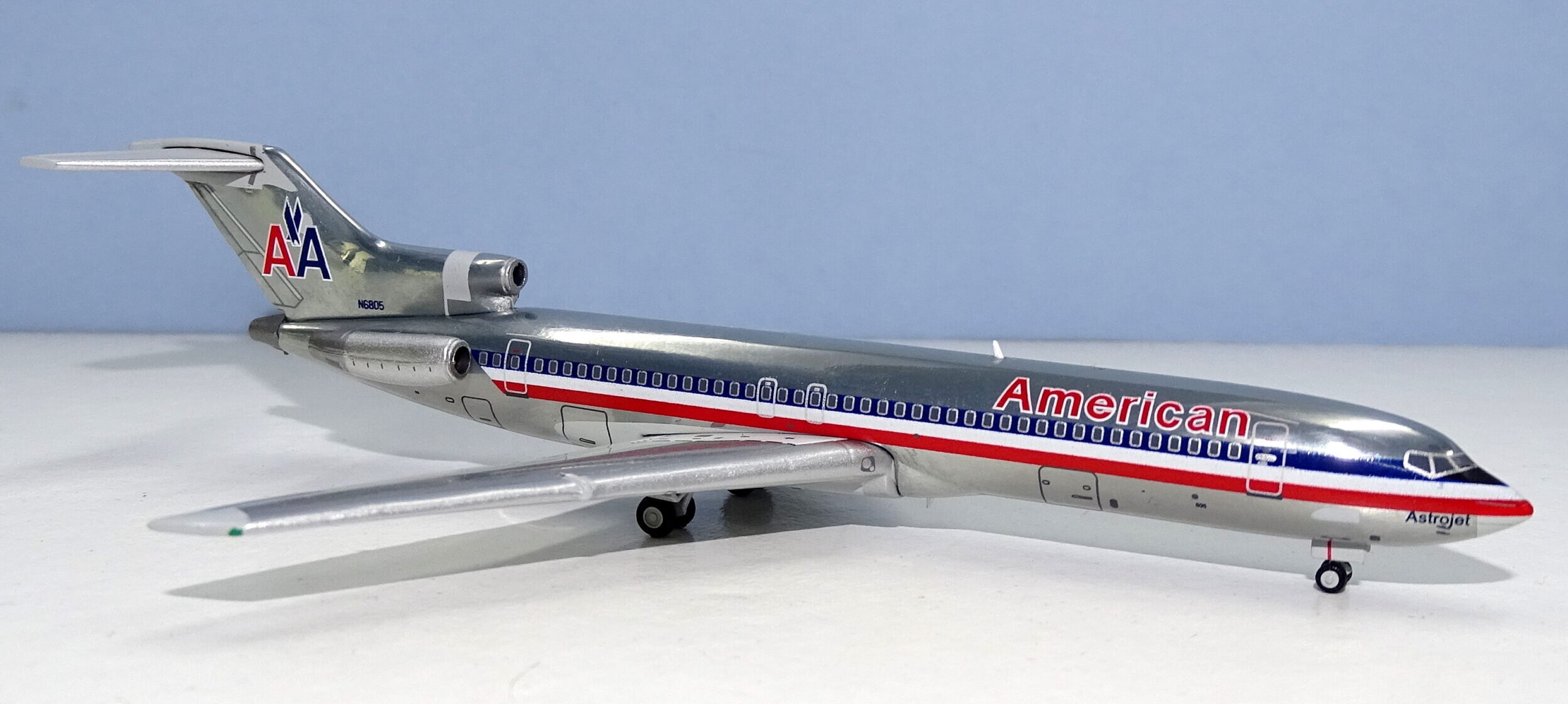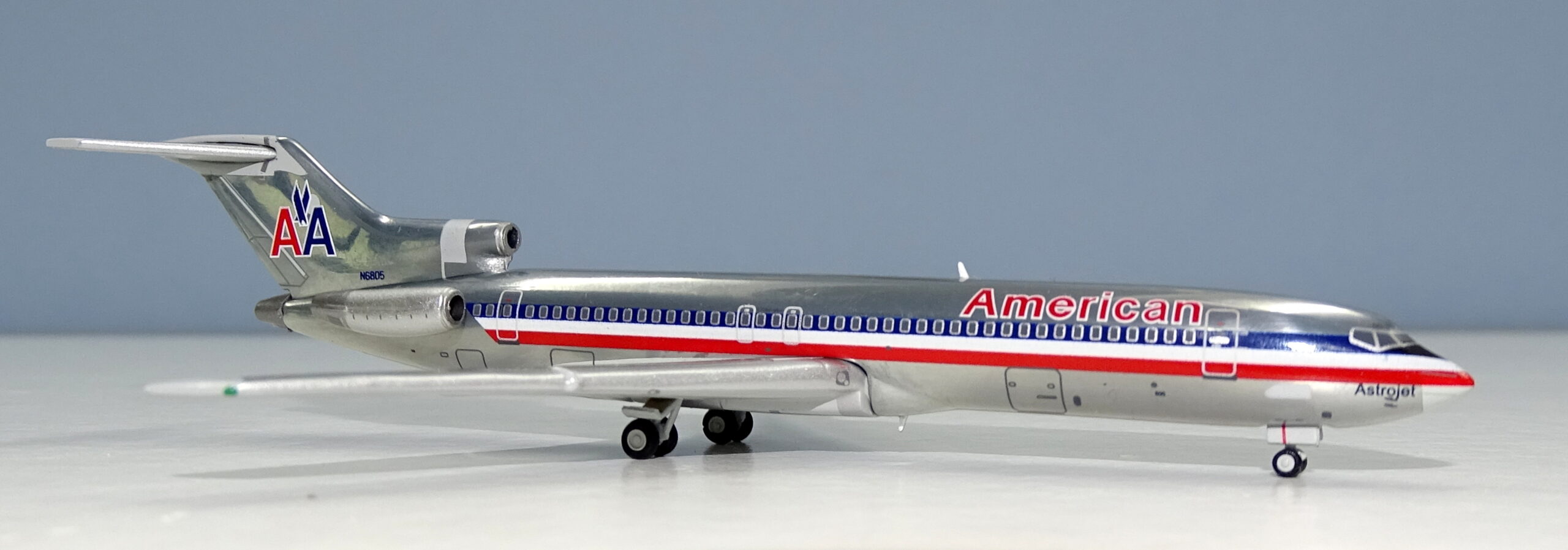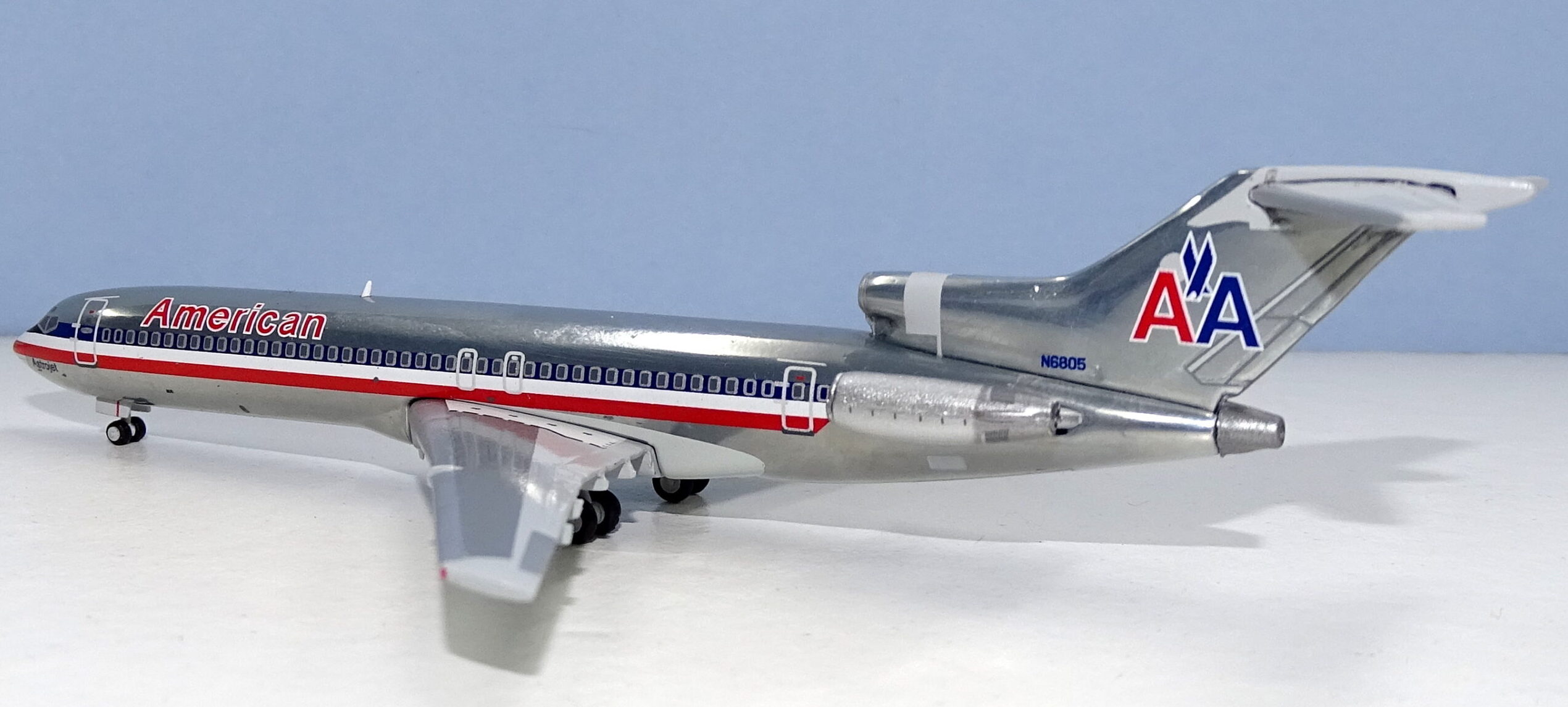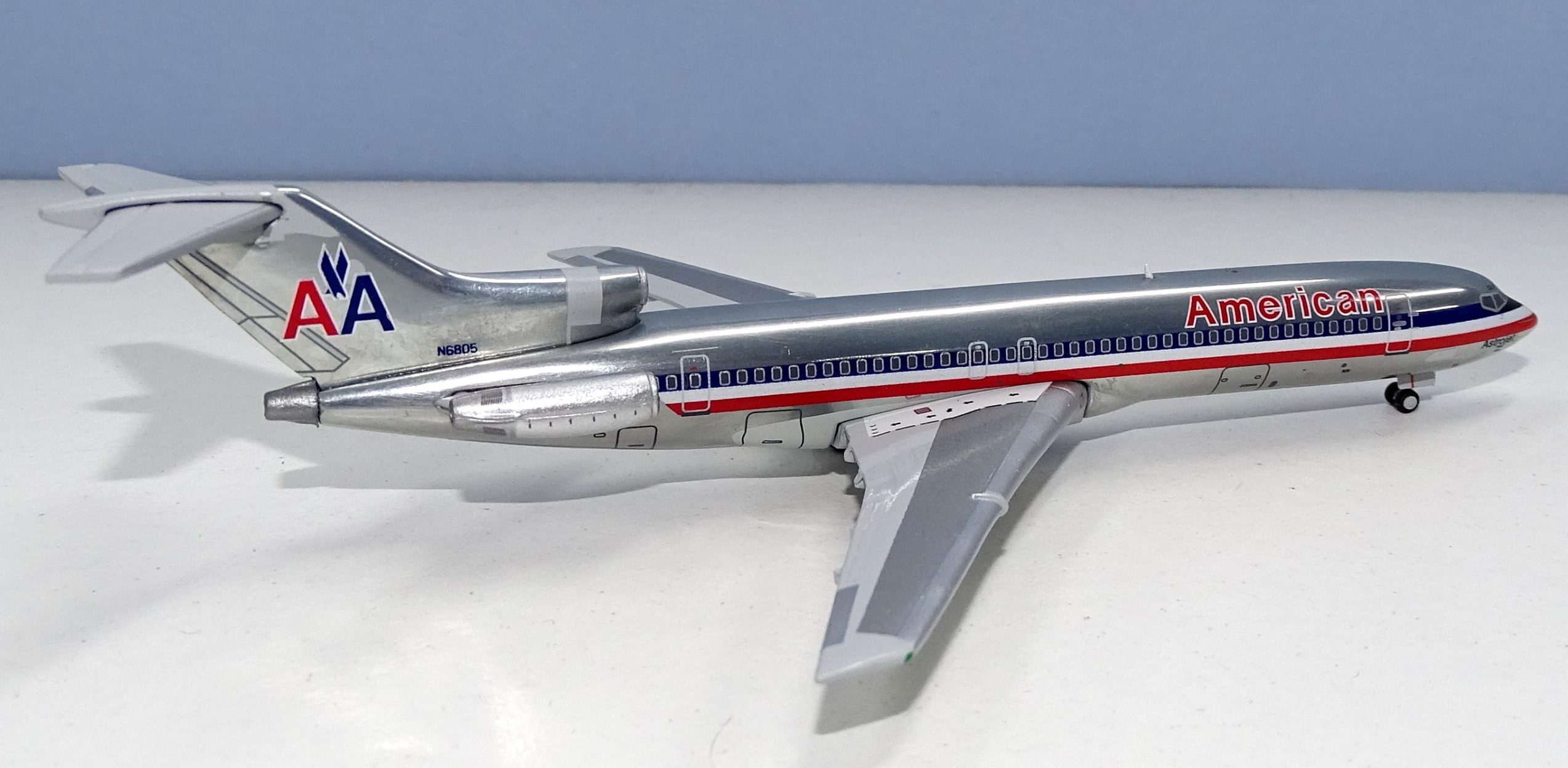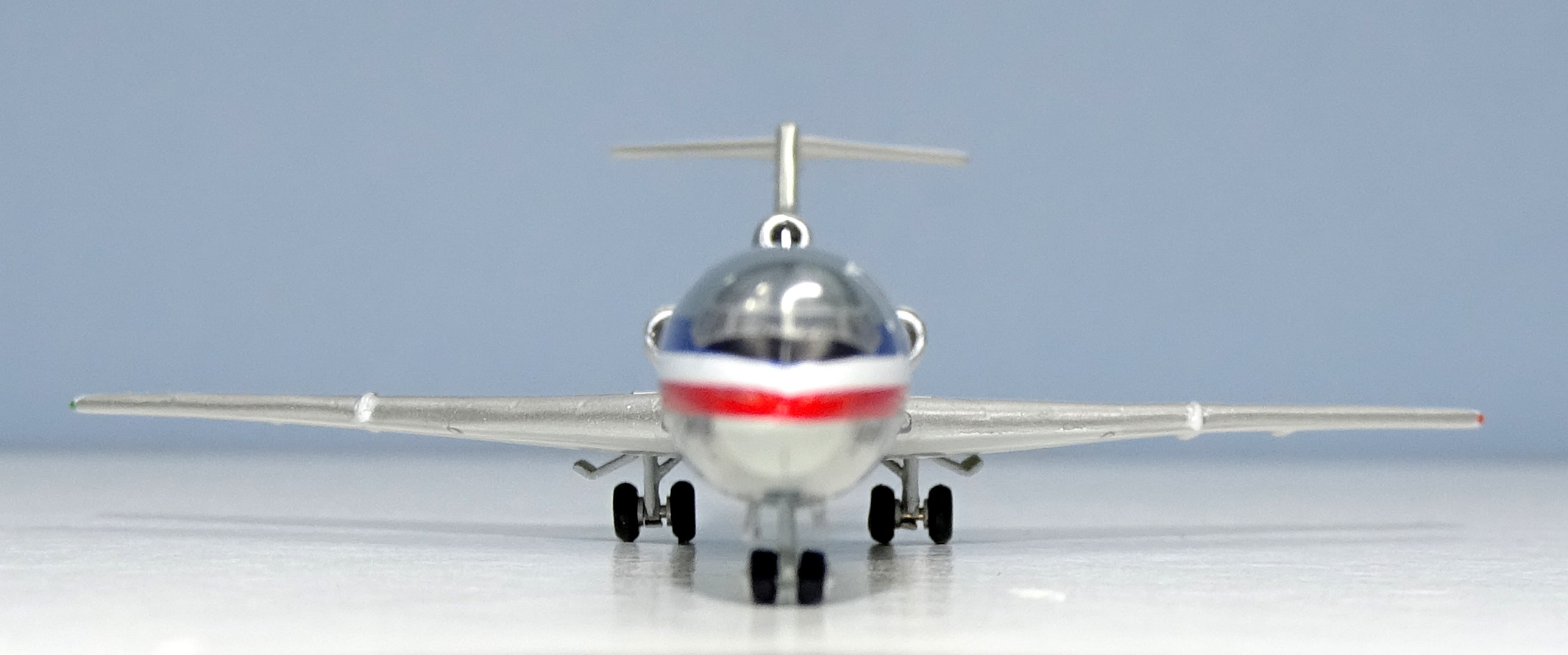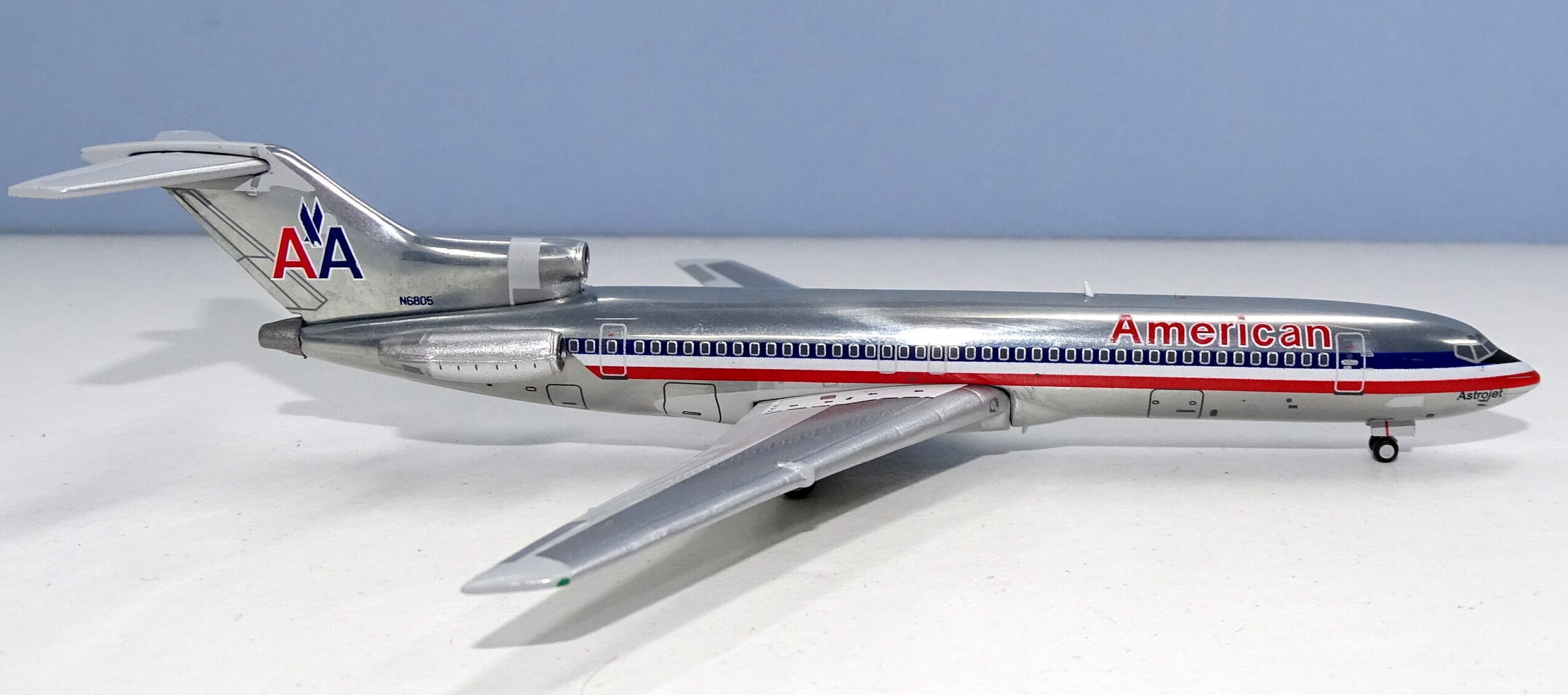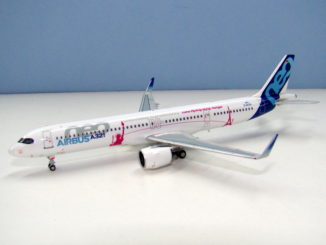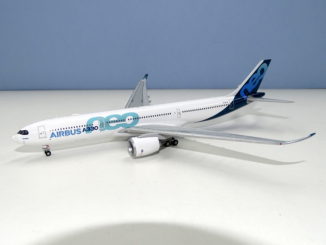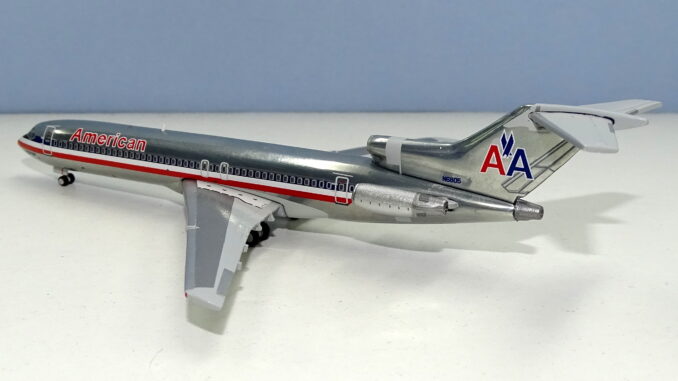
It is highly unusual for JC Wings to produce models that represent airlines from North America and even more unusual for them to make classics. This is because they appear to have a tacit agreement with their production partner, Gemini Jets, not to tread on each other’s toes. It was therefore quite a surprise to see that just before Christmas they released an American Airlines 727-200 and even more of a surprise, given JC’s reputation, that is was delivered very soon after the announcement. Historically when JC has made US models it is due to issues with licensing on the Gemini side but I would be surprised if that were a problem with this model. Nonetheless it is always good to see more 727s in 1:400 scale so I’ll quit guessing and concentrate on the model itself.
THE REAL THING
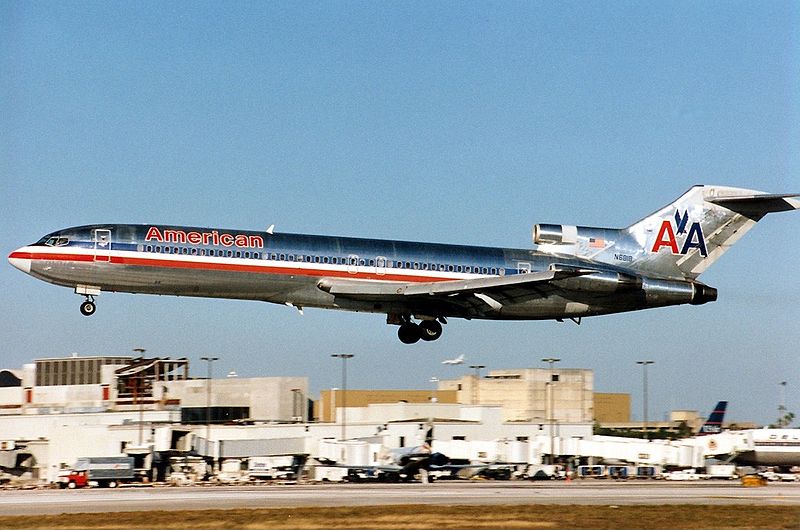
The Boeing 727-200 Advanced ruled the airways in the USA during the 1970s and early 1980s. All of the major US trunk airlines utilised the type and some, most notably Braniff International and Continental, built their fleets around the type (BN only had a few DC-8s and the odd 747 whilst CO only had DC-10s extra to its 727s for most of the period). Although the McDonnell Douglas MD-82 came to be the foundation of the American Airlines fleet during the mid-late 80s it is actually to the trusty trijet that AA owes much of its success.
There is no doubt that of the big US trunk airlines American, probably more than any other aside from Delta, benefitted from the passing of the deregulation act as its strong leadership under Bob Crandall powered its change from a classic New York based regulated trunk airline to a Dallas based pioneer of hub and spoke operations.
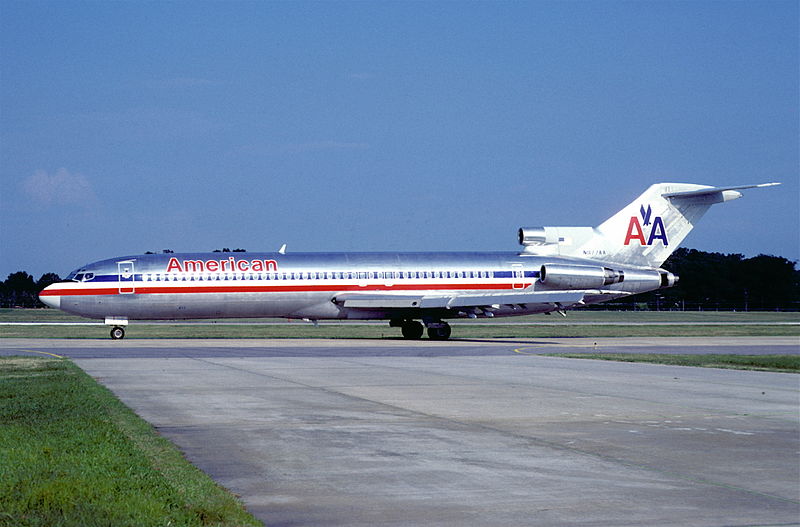
American was an early adopter of the lengthened 727-200, taking 41 727-223s between February 1968 and September 1969 plus an extra aircraft from its takeover of Trans-Caribbean in March 1971. This is no real surprise since AA had been one of the earliest customers for the series 100 in January 1964.
All of these early standard 727-223s would be upgraded to Advanced status during the 1970s but it would not be until mid-1975 that American would take delivery of its own new 727-223 Advanced models. The airline would continue to add the type to its fleet from that point forward, no doubt finding it an excellent replacement for its early 707-123Bs. It even acquired 15 727-227 Advs that were originally intended for Braniff in early 1981. This is somewhat ironic considering American’s ruthless role in killing Dallas’ previous hometown airline.
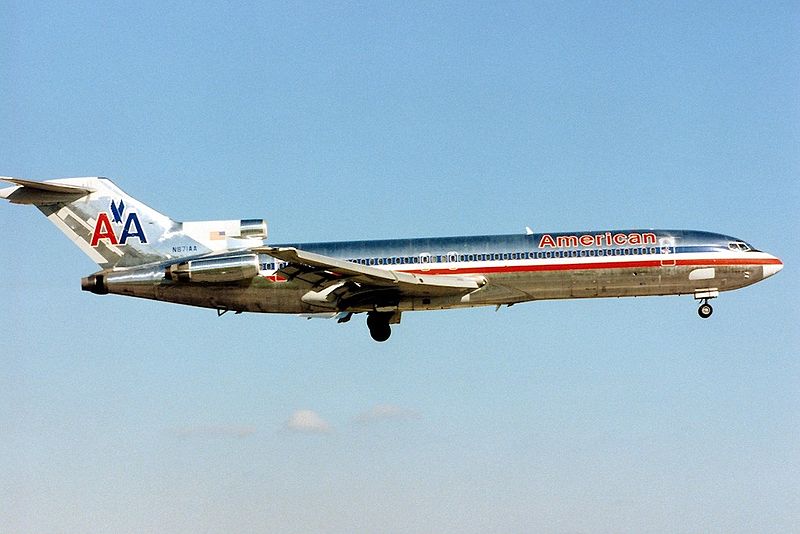
In total 83 727-200 Advanceds were added to the original 42 non-Advanced models and they enabled the massive expansion from the DFW hub as well as solidifying operations at other major American hub operations such as Chicago O’Hare, New York JFK and into the 1990s Miami. Most of the eldest series 200s, all of the pre-1977 build fleet, were retired by 1996 – replaced by a mixture of MD-82s and new Boeing 757s. The remainder soldiered on into the late 90s. The last four aircraft weren’t retired until April 30, 2002.
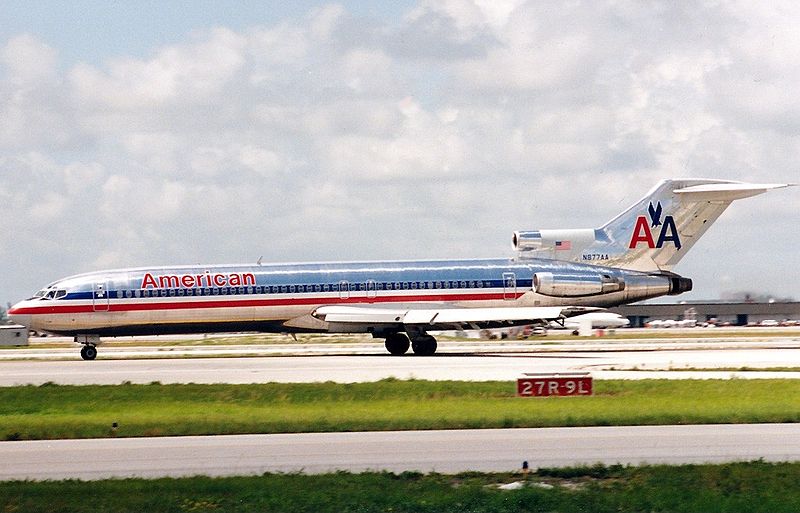
N6805 was one of the earliest non-Advanced models delivered in March 1968. She remained with the fleet until May 1994. After that she served a short lease to Private Jet Expeditions and was converted to a freighter after purchase by American International. Her later career was more exotic with stints in Ireland, as EI-HCC, with Hunting Cargo and Air Contractors, and then finally an export to Indonesia where she was used for spares by Tri-MG Airlines.
THE MODEL
The format for my reviews is to split them into three key areas:
- The mould of the aircraft
- The paint and livery
- Printing and quality control
Each can get a maximum score of 10 for a section giving a maximum combined total score of 30.
THE MOULD
Gemini Jets and JC Wings have now used their 727-200 three times in the past six years, which is hardly extensive usage. Aeroclassics on the flipside have used theirs around 50 times in the same period. Comparing the two is a little academic but I did just recently undertake a detailed mould review of the 727-200 in which I compare all five of the moulds that have been made. See T-tail Trijet Heaven: A 727-200 Detailed Mould Review for the full details.
This mould is a modernized version of the original Gemini Jets mould, which dates all the way from the turn of the century. Indeed, Gemini actually made an American Airlines 727-200 on the original mould way back in 2000. I own it and it is a fine model. The primary difference between the two versions are the undercarriage and the tail.
Looking at the basic mould and the nose and forward fuselage are pretty good. The only detractor is that on the new mould version the nose seems pointier than the old. I don’t know why this is and it is inferior to the original as it is now too pointy. The rest of the main fuselage is very nice.
The age of the mould dictates that it is a cradle mount (then again so is the Aeroclassics). The seam is quite discrete and doesn’t follow the wing fairing as in the Aeroclassics version. This doesn’t make it any more obvious though and you could argue it is better. The wings themselves are shaped well but they are rather lacking the fine details especially at the rear wingtip and on the flaps.
Even though on the updated mould the tail has been updated to a seamless variant it is still not much better than any of the other moulds (and a lot poorer than the Dragon Wings). Although it has no seam at the tail top, to fit the horizontal stabilisers in, the shape is wrong. It has no upward angle at the anterior edge and the tail top is too flat. Also the attachment of the horizontal stabs as slot ins actually introduces a bit of a downward angle and a small gap where they fit.
Lastly the changes to introduce all new rolling landing gear have not been a complete success. The nosegear doors are too large and the landing gear leg not well detailed. At the maingear the doors are way too short and as they fail to cover any part of the tyres are inaccurate.
One addition that has worked is the fitting of aerials, of which there are two. Overall the effort in updating the mould hasn’t especially improved it over the original. Fortunately, the original is one of the better of Gemini’s older moulds and so you still get a decent aircraft. The Aeroclassics 727 has its own set of faults but wins on points. That doesn’t mean it is light years ahead though and this is a mould I’m happy to purchase.
SCORE – 7
PAINT & LIVERY
The Red, White & Blue colours, famously largely designed by Massimo Vignelli and introduced in 1968, are perhaps the most iconic livery of all time. The livery wasn’t static across its massive 45 year usage though and at different points there were variations. Gemini Jets 2000 release shows the 727 in its later years and pleasingly JC Wings here have decided to show the earliest 727-200s that wore the scheme, whence the choice of this registration.
The earliest aircraft to wear this scheme were called Astrojets still. This was halted around 1971 but photos show this frame still wore the title in 1972. JC Wings have done their homework and the model has the title adorning its nose area. They have also matched the areas of the aircraft that were painted rather than natural metal. On this early bird that included the nosecone, a mid-engine panel, the wing fairing and the tail top. The model matches well the photo I am using for reference, which is this lovely image by Bob Garrard.
The colours used and the cheatline striping are excellent as is the main titles. The tail logo is a little disappointing as it seems too small. Looking at photos, and the older Gemini model, and the AA should be taller. The tail is also very shiny. I doubt the aircraft ever looked this immaculate even when it came out the factory!
SCORE – 9
PRINTING & QUALITY CONTROL
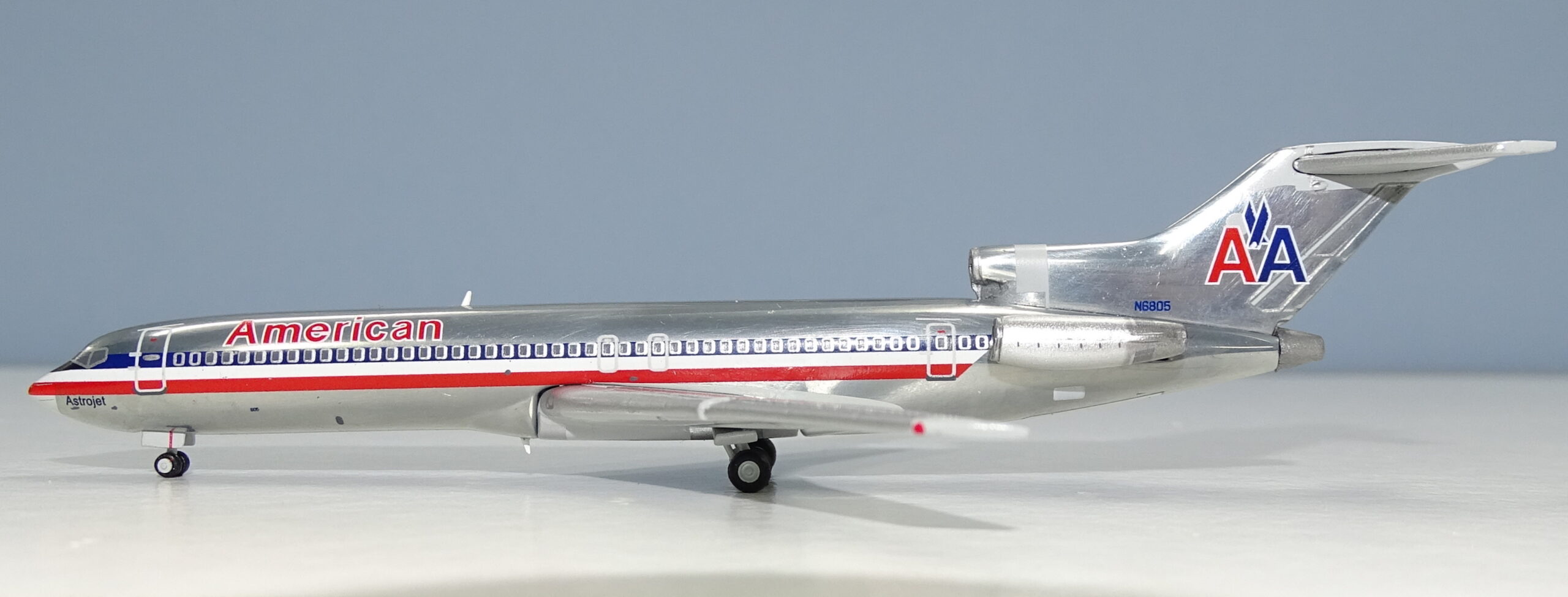
I usually have little to complain about with JC printing but as with a Singapore Airlines A380 I reviewed a while back this model falls foul of their printing being too detailed. The actual aircraft had two windows blocked out behind the L1 door and four more at the rear of the fuselage. JC Wings does show this but outlines the windows soo heavily that unless you are using a magnifying glass you can’t tell they are supposed to be blocked-out. On the real thing you couldn’t see the blocked-out windows barely at all so the model, although having the correct windowline, looks like it doesn’t.
As I have already mentioned the whole tail area is also way too clean. This isn’t just the silver. The engine exhausts, which ought to be black are instead light grey. They also have less printing on them the original 2000 model although in other areas, such as the side engines, the JC wings version has much more detailed printing. Build quality is excellent.
SCORE – 8
CONCLUSION
This model sits well with my large American Airlines fleet but, rather ironically, I think I prefer the original year 2000 release, which although simpler, had a better overall look – partly because it isn’t as shiny and partly because I prefer the old mould nose, undercarriage and even tail top. That doesn’t mean to say that I am unhappy with this model and it is lovely to see an early AA 727-223 being made in 1:400 scale.
FINAL SCORE – 24

